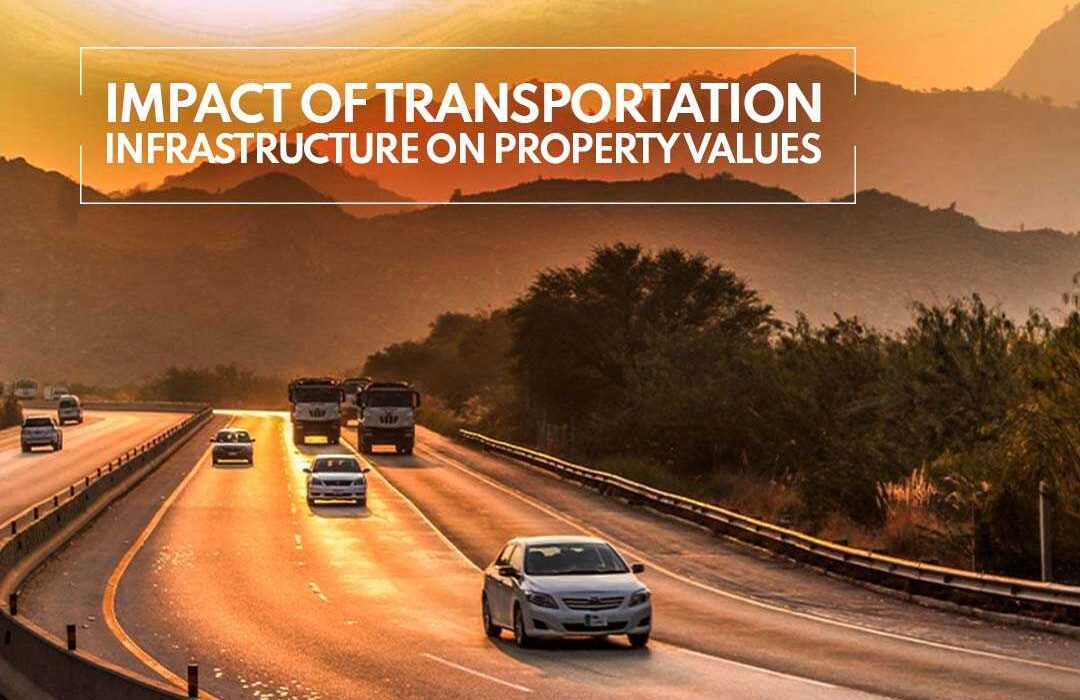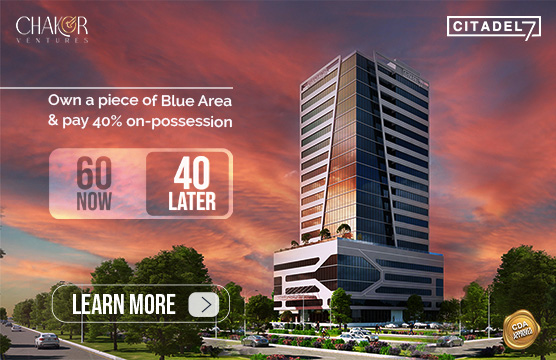Property in Pakistan and worldwide is dependent on the transportation infrastructure. The property’s value increases immensely once an area has a built-in transportation system as the growth and prosperity of the urban areas are increased and reshaped. The projects with well-developed and maintained transportation systems will attract investments, boost property value, enhance the standard of living, and appreciate real estate developments.
During 1947, Pakistan depended on roads for 8%, whereas now it depends on maintained and well-connecting roads for almost 96%. The roads lead to better economic development, and it solely depends on the road web in the country.
As the transportation systems in a city evolve, the properties already built and future projects in particular, including commercial real estate, are essential. The robust public transportation plays a pivotal role in the economic development of Pakistan’s GDP.
Impact of Transportation System on Property in Pakistan
Motorways, along with connecting well-built and maintained roads, are practical for the country’s industrial, economic, domestic, and social growth. Trade, national, international, commerce, or integration, will increase and improve immensely. Even the modernization of the transportation system is enhanced with added technological inputs into the transport modes.
Let us evaluate and discuss the advantages of the best transportation system built in Pakistan.
- Motorway boosts the economy of the country.
- Better motorways and roads impact the financial conditions of the country.
- The best motorways will encourage top-notch development on the land that is free to be used.
- Due to better motorways and connecting roads, access to labor, education, health, and many other amenities is easy.
- Motorways curtail the poverty and redundancy prevailing in the country.
- The best and most advanced motorways will positively impact the country’s environment by connecting rural and urban areas.
Highways and Byways: A Deep Dive into the Motorway System
Well, the performance of the transportation system and the communication structures are the country’s backbone. This investment in the country’s infrastructure development directly affects economic growth as the availability of markets is accessible to the producers. They can market their produced goods, reduce transportation time and cost, and generate employment opportunities.
Pakistan is a country with almost 161 million people, so they need and have reasonable transportation systems built to cater to their needs. The country generates 153 billion tons of kilometers annually, and the local total domestic transport load is around 239 billion passenger kilometers.
This much transportation load is to be handled by the roads and the tracks built-in to monitor the traffic flow. Property in Pakistan is affected by the better development of the transportation systems as it directly boosts the country’s economy.
National Highway Authority (NHA)
The road length under the NHA is 12000, almost 4% of the entire road network and caters to nearly 80% of Pakistan’s commercial traffic. The density of the roads indicates the developments taking place. Presently, road density is 0.32 km/km2, which is minimal compared to the regional standard. Our government wants to double it by 0.64 km/km2. Currently, Pakistan’s road networks are more than 260000 km long.
Commercial real estate, businesses, and the national trading corridors are all dependent on Pakistan’s motorways as they encourage trade and businesses nationally and internationally. Pakistan’s road networks upgraded and increased the positive happenings for the “National Trade Corridor Project,” which aims to link the country with Arabian Sea ports, namely, Karachi Port, Port Bin Qasim, and Gwadar ports to the rest of the world, including land connections with Afghanistan, Iran, India, Central Asia, and China.
M-1 Motorway Islamabad to Peshawar
This motorway (M-1) 155 KM-6-lane links Peshawar, Charsada, Noshera, Sawabi, Attock, Burhan, and Hasanabadal to Islamabad. It is operational since 30 October 2007. The road connects Afghanistan and Central Asia.
It takes high traffic flow off the N5, even the safest option for the NATO supply line to Afghanistan. It is well-known for being the most beautiful motorway in Pakistan, crossing River Sindh and River Kabil.
M-2 Motorway Islamabad to Lahore
This is the first motorway in Pakistan; the 367 km 6-lane M-2 connects Pakistan’s capital, Islamabad and Lahore. South Korean Daewoo Corporation constructed it. The inauguration took place in November 1997 in Nawaz Sharif Govt. This motorway is given the status of being the 1st motorway in South Asia. During war situations, this road is used for different strategic developments.
This motorway is in the Punjab province of Pakistan. It passes through the following: Kala Shah Kaku, Sheikhupura, Khanqah Dogran, Kot Sarwar, Pindi Bhattian, Sial Morr, Kot Momin, Salem, Lilla, Kallar Kahar, Balksar, and Chakri before ending just outside the twin cities Rawalpindi and Islamabad.
Also, it links Peshawar city, crossing the junction of the M3 to Faisalabad at Pindi Bhattian. It also connects to tourist places, including Hiran Minar, Waris Shah Tomb, Khewara mine, salt range, Citric fields, Rice fields, and Kalar Kahar Jheel.
M-3 Motorway Pindi Bhatian to Faisalabad
This motorway M-3, the 54 km 4-lane, links the Pindi Bhattian Arch bridge junction on the M-2 with Faisalabad. Initially, the plan had 6 lanes, but they were reduced to 4 lanes due to lack of funds. The construction began in May 2002 and was completed ahead of schedule. Its inauguration date is on 2 October 2003. Presently, the Punjab Govt is constructing an industrial area on the Sahianwala interchange.
M-4 Motorway Faisalabad to Multan
This motorway is length 233 km and is 4-lane; Pakistan Prime Minister Syed Yousaf Raza Gillani performed the breaking ceremony of the highway. Two points are still under construction: Phase Faisalabad to Gojra and Khanewal to Multan. It links Multan with the M-3 Motorway at Faisalabad. M4 will begin at the Faisalabad interchange at Sargodha Road in Faisalabad.
It continues to connect southwest cities, namely Faisalabad, Jhang, Gojra, Toba Tek Singh, Shorkot, Khanewal, and Multan. It merges with N5 temporarily at Khanewal until it is completed. M4 will be constructed in four stages as follows:
- Faisalabad-Gojra (58 km).
- Gojra-Shorkot (61 km).
- Shorkot-Din Pur-Khanewal (65 km).
- Khanewal-Multan (65 km), two large bridges will be constructed here on the rivers Ravi and Shadhnai.
M-5 Motorway Multan to Dera Ghazi Khan
This motorway is planned to have 4 lanes that will link Multan to Dera Ghazi Khan. It will be constructed after the completion of the M-4 Motorway.
M-6 Motorway Dera Ghazi Khan to Rato Dero
This 4-lane motorway will link Dera Ghazi Khan with Rato Dero. It will be constructed after the completion of the M-5 Motorway.
M-8 Motorway Rato Dero to Gwadar
This 892 km 4-lane M-8 motorway is under construction in the Sindh and Baluchistan provinces. It currently has two lanes, and a further two lanes will be added. After completion, it will be directly linked to the port of Gwadar with the rest of the country. Also, it will link up to the M-6 Dera Ghazi Khan-Rato Dero Motorway.
M-9 Motorway Hyderabad to Karachi
This motorway is known as the Hyderabad-Karachi super highway. It is already in the process of upgrading to a 6-lane access-controlled motorway. This motorway was constructed by the Malaysian construction company Built Operate Transfer(BOT) in January 2012
Pakistan's Transport System Backbone of Economy
Commercial real estate, properties in Pakistan, education, health, social, and economic development depend entirely on the transport system planned and designed. As it is the backbone of the country. It entertains 80% of Pakistan’s traffic flow.
The total 9,574 km long National Highway and the Motorway network is only 3.65% of the road network. Still, there is vast scope for development in this sector. Pakistan’s transportation sector accounts for 10.5% of GDP.
Transportation provides almost 6% of the country’s employment plus 12-16% to the Federal Public Sector Development Program(PSDP).
Hence, Pakistan’s transportation system is incredibly well-built and globally connected through means of road, sea, and land, but it still needs to be maintained.


